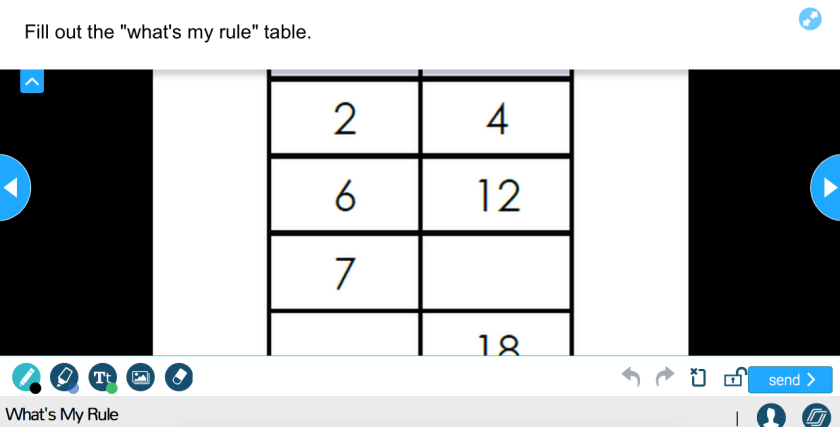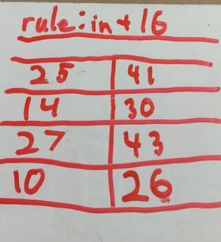My third grade class ended their unit on data analysis and computation last week. We’re now onto our next adventure of exploring patterns and number rules. This last week the class started to identify number patterns. The class observed how they could develop rules to find the perimeter of connected squares. This was a bit of a challenge because students had to combine two different operations to find the actual rule.

We used this activity that I discussed a bit more in detail last year. They looked for consistency and investigated with trial-and-error what the “rule” might be. The class used a Nearpod presentation to see how a function machine transforms numbers.

Eventually the class moved towards creating their own rules using dice and a whiteboard. It was during this time period that students started to dig a bit deeper into how rules impact a table.

One issue came up with the consistency of the numbers on the “in” side of the table. A few students were confused with the idea that numbers didn’t necessarily have to be in order on the “in” side of the table. A few examples helped address the issue but I thought it was interesting as most students are so used to a specific 1:1 scale. I wonder if this is something that’s emphasized more at the second grade level and it just continues with our third graders.
Later in the week I brought out a digital function machine. The kids had a great time placing numbers in and watching at they transformed into something different.
I highly recommend the PheT simulations. Feel free to check out other simulations that they’ve developed. Next week the class will be working on creating and identifying true or false number sentences.

Matt,
Thanks for sharing the online function machine – I love it! Can’t wait to use it with my students too!
LikeLiked by 1 person
Great news! I’m glad that you found it useful.
LikeLike